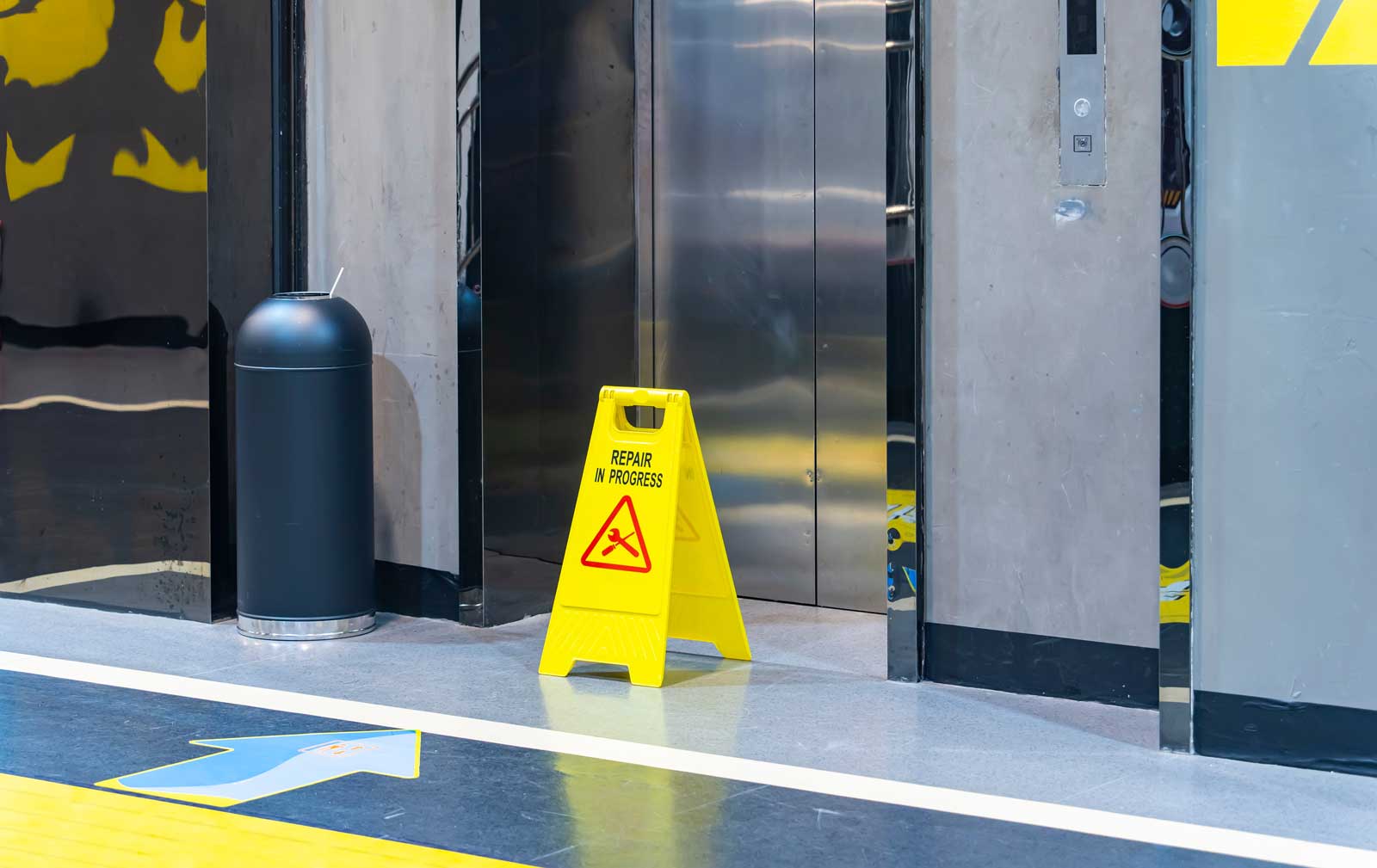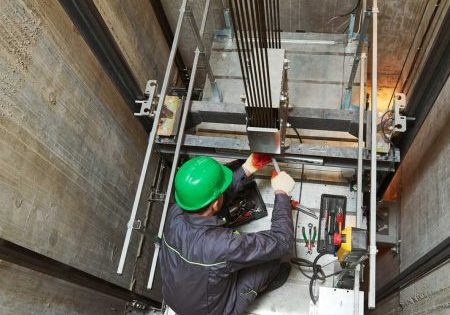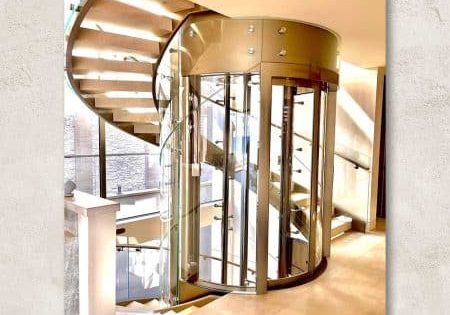The argument for common technology standards for VT
by Rick Sayah
 This paper was presented at the 2022 International Elevator & Escalator Symposium in Barcelona, Spain.
This paper was presented at the 2022 International Elevator & Escalator Symposium in Barcelona, Spain.
Introduction
At a basic level, the control theory of a vertical-transportation (VT) system is very simple. The general capabilities expected of a control system have not evolved drastically. However, the evolution of microprocessors has allowed what used to require a wall full of relays to be reduced in size to fit in a small box. The motor-generator set is now a digital drive. Advances in manufacturing and materials have likewise allowed for a reduction in the size of the machinery.
But the proliferation of the microprocessor hasn’t just reduced the size of components, it’s allowed for more complex capabilities, such as destination dispatching and maintenance monitoring of individual components. The “Internet of Things” allows a high level of intelligence to be built into all aspects of a VT system.
This increase in complexity and capability is analogous to what has happened in the automobile industry. It used to be very easy to pop the hood on your automobile, make a tune-up, change the oil and perform simple maintenance. Now, each vehicle requires a special set of tools, instructions and a computer interface to properly maintain.
Concurrently in other aspects of technology, the software industry has embraced various open-source standards. The ubiquitous nature of the internet and worldwide web would not be possible if the entire world hadn’t agreed to a single communication standard.
Further, a common interface language is becoming necessary for interface with other building systems. Every major project at a minimum is provided with some security interface, and discussions of hands-free or seamless entry suggest that further interoperability will be required in the future.
This paper will explore the evolution of VT systems and the relationship between the equipment design, the facility managers and the maintenance companies. As VT systems grow in complexity, it becomes apparent there is a need for some commonality in design aspects that will foster the ability to train mechanics to a common standard while allowing for healthy competition and robust product development.
A Brief and Oversimplified History of Elevators
The purpose and function of elevators remain largely unchanged from their original inception. It is simply a platform that transports passengers or goods between two or more landings vertically along a set path. Enclosures and operable doors were added to protect the occupants and the persons near the elevator from the moving parts. These systems were provided with switches to indicate they were in the closed position, and the elevator system would be restricted from operating if they weren’t closed.
Early elevators were manually operated. Then, later, they were paired with electric motors, hydraulic pumps and other means of delivering power. At first, these machines would be manually turned on and off by an operator, but as buildings got taller and machines got faster, it became necessary to automate these systems.
Door systems and gates were initially manually operated, but also rapidly became motorized. Photoeyes and lightbeams were added to detect obstructions. The same motion control improvements that apply to the elevator machine allow for more precise door operation.
Dispatching was, likewise, performed manually. An operator in the elevator would be responsible for controlling the elevator. A human dispatcher in the lobby would manage the queues. And with the advances in the computational power of modern microprocessors, elevators are able to manage the traffic and apply sophisticated algorithms to optimize performance.
In summary, the elevator control system serves three primary functions:
- Safety of the users
- Smooth operation/motion of the doors and cabin
- Traffic management and dispatching
These functions have existed from the earliest editions of the safety codes, with simple gate switches and contacts serving to prevent operation of the elevator should any component of the safety chain be out of place. Advances in microprocessor technology and sensors have allowed for more sophistication and miniaturization, but the basic operating theories and concepts remain somewhat simple.
All of these advances in technology conspire to create a collection of “black boxes” that connect together but are relatively difficult to maintain, except by a mechanic specifically trained on that system. This creates an ecosystem that is somewhat guaranteed to crumble under its own weight. As new control platforms come online and older systems continue to age, the number and variety of components in the marketplace continues to grow and fragment. It becomes difficult for any single mechanic to be competent across the range of equipment that is out there.
The difficulty of training staff and maintaining the knowledge base necessary to efficiently service elevator systems translates into extended outages. The variety of specialized parts unique to each control platform creates supply chain issues that translate into long lead times for replacements or significant storage/warehousing requirements. All of this adds up to dissatisfied customers.
The ownership of a building has a responsibility to their occupants to provide reliable elevator service. This responsibility is amplified in buildings where persons such as the elderly or physically challenged need to rely upon elevators. Facility managers need to efficiently move products, as well as people. An elevator serving a retail establishment that suffers an outage that prevents the movement of goods can result in the loss of thousands of dollars of revenue per hour. The ability to service and maintain the elevators within their buildings is of utmost importance to them. If their current service provider is underperforming, they must have the ability to find a provider that can get the job done.
These concerns aren’t unique to elevators. They exist among users of automobiles, consumer electronics, farm equipment and more. There has been a significant amount of legislation and government intervention related to the “Right to Repair” in recent years. It is important to understand these legal precedents and understand how they could be applied to the VT industry. More importantly, it might be argued that the industry may prefer to take a proactive stance and set its own rules before some government bureaucrat decides it needs to be regulated.
The Right to Repair movement can be summed up simply. The purchaser of a product should have the right to use, modify and repair the product by whomever and whenever they choose. Naturally, some limitations will apply to VT systems, where public safety comes into play. But it is reasonable to expect that the owner of an elevator system should be able to obtain service from any qualified service company, regardless of who manufactured or installed the original equipment.
Further, there is a significant mismatch between the pace of consumer product development – where two years is considered outdated for a phone, or where cars are leased for three to five years – and the built environment. A high-rise building can easily take 10 years from initial concept to final ribbon cutting. The construction period alone can take three or four years. Elevators are typically procured at the beginning of construction to allow for coordination with the superstructure, which means that, by the time tenants move in, the state of technology has advanced by a few steps. This creates a demand to be able to refresh the public interface of the system without significantly reworking the basic operating components.
So, what’s happened in these other industries, and what can we learn from them?
The first bit of legislation related to the Right to Repair occurred in the U.S. in 2002. Senate Bill 2617, “The Motor Vehicle Owners Right to Repair Act,”[1] was introduced, and as a consequence, an industry coalition of the Alliance of Automobile Manufacturers, the Association of International Automobile Manufacturers and the Automobile Service Association came together and “committed to providing independent repair shops with the same service and training information related to vehicle repair as is available to franchised dealerships.” However, it is important to note this bill was never approved, and this voluntary agreement was not codified.
In May of 2021, the U.S. Federal Trade Commission prepared a report to Congress named “Nixing the Fix,”[2] which attempted to define the issues with the availability of repair related to consumer electronics. The report noted several types of repair restrictions:
- Physical Restrictions
- Unavailability of Parts, Manuals and Diagnostic Software/Tools
- Designs That Make Independent Repairs Less Safe
- Steering Consumers to Manufacturers’ Repair Networks Using Telematics Systems
- Application of Patent Rights and Enforcement of Trademarks
- Disparagement of Non-OEM parts and Independent Repair Services
- Software Locks, Digital Rights Management and Technological Protection Measures
- End-User License Agreements
It is important to understand each of these restrictions as they will inform potential areas of improvement.
Physical Restrictions
This refers to design factors that limit the ability to repair a device due to configuration or enclosure. Enclosures or parts that are glued, welded or soldered, or that use unusual fasteners are examples. These devices require special tools to access and repair, or the repair of the component may cause damage to the exterior.
Unavailability of Parts, Manuals and Diagnostic Software Tools
This can be especially frustrating in the digital age where most information is a few search terms away, and next day, or even same day, delivery of other goods is readily available. Parts may only be made available to “authorized repair networks.” Service manuals and technical bulletins are not readily obtainable. Software Tools and/or the information required for a third party to develop are often not supported by the OEM.
Designs That Make Independent Repairs Less Safe
This is similar to physical restrictions, but instead of cosmetics, the impacts of the design make any repair potentially compromise the safety of the device.
Steering Customers to Manufacturer’s Repair Networks Using Telematics Systems
Many devices continually stream information about the health and usage of the device back to the manufacturer. This information is often not disclosed to the consumer, even though they may be paying fees related to the service. This information can contain critical diagnostic information that would be of benefit to an independent repair shop.
Application of Patient Rights and Enforcement of Trademarks
This refers to OEMs creating barriers to the development of third-party supply chains for parts and tools.
Disparagement of Non-OEM Parts and Independent Repair Services
In many cases, OEMs have launched campaigns that question the quality of the parts or services used by independent repair services.
Software Locks, Digital Rights Management and Technological Protection Measures
This category refers to all means of preventing software barriers that prevent independent repair shops from accessing the internal programming necessary to carry out routine maintenance/inspection activities or repair work and modification.
End-User License Agreements
This refers to restrictive agreements that limit the rights of the equipment owner from modifying embedded software. This prevents any third party from being able to update components.
It is not within the purview of this paper to argue whether or not the VT industry engages in these practices, nor whether they may be right or wrong for doing so. The intent of this paper is to bring this discussion to the forefront so that the industry can proactively address these concerns before government authorities decide to step in and solve it for everyone.
Adding to the weight of this study, there are several pieces of legislation that have been approved in the U.S. and Europe.
July 31, 2012 – Massachusetts passes H 4362, which was subsequently ratified via a ballot measure. The summary of the measure is as follows:
“A YES VOTE would enact the proposed law requiring motor vehicle manufacturers to allow vehicle owners and independent repair facilities in Massachusetts to have access to the same vehicle diagnostic and repair information made available to the manufacturers’ Massachusetts dealers and authorized repair facilities. A NO VOTE would make no change in existing laws.”
April 15, 2016 – “Steps to Increase Competition and Better Inform Consumers and Workers to Support Continued Growth of the American Economy” – Presidential Executive Order. President Barack Obama issued this executive order, which calls upon federal agencies to detect anti-competitive practices:
“Agencies shall identify specific actions that they can take in their areas of responsibility to build upon efforts to detect abuses such as price fixing, anticompetitive behavior in labor and other input markets, exclusionary conduct and blocking access to critical resources that are needed for competitive entry. Behaviors that appear to violate our antitrust laws should be referred to antitrust enforcers at DOJ and the FTC. Such a referral shall not preclude further action by the referring agency against that behavior under that agency’s relevant statutory authority.”
November 2020 – Massachusetts extends its automotive “Right to Repair” law so it can apply to recent developments in wireless technology and telemetry data that allow access to this data by third-party repair shops.
November 25, 2020 – The European Union adopted a motion “towards a more sustainable single market for businesses and consumers” that includes the following in the description:
“Establishing a genuine right of repair in Europe.
“To be sustainable, products must be repairable so they can remain on the market for as long as possible. It is time to stamp out practices which prevent or hinder product repairs. On average, 70% of Europeans would prefer to repair rather than replace a faulty product. However, sellers still tend to be much keener on product replacement.
“We need to open up Europe’s product repair market by making repairs simple and affordable. This can be achieved by efforts upstream to provide information on the degree of repairability of a product and also downstream of the value chain to ensure the availability of spare parts, quick repair times and access to information on repairs for sellers, independent repairers and also consumers, to encourage home repairs. In particular, we must support local, independent repairers. It is unacceptable that intellectual property mechanisms make carrying out product repairs the prerogative of the designer or distributor. Logistical and financial support mechanisms must be deployed to help these local tradespeople.”
July 09, 2021 – “Executive Order on Promoting Competition in the American Economy” – Presidential Executive Order. President Joe Biden issued this executive order which states the following:
“This order affirms that it is the policy of my Administration to enforce the antitrust laws to combat the excessive concentration of industry, the abuses of market power and the harmful effects of monopoly and monopsony — especially as these issues arise in labor markets, agricultural markets, Internet platform industries, healthcare markets (including insurance, hospital and prescription drug markets), repair markets and United States markets directly affected by foreign cartel activity.”
September 23, 2021 – The European Commission of the European Union issues a sweeping recommendation that will enforce USB-C as the common connector for all electronic devices.
What does this mean for the VT industry?
It is clear there is a growing body of legislation that is aimed at consumer choice in their ability to repair products they own. But how does this affect VT manufacturers? One has to assume it won’t be long before a government official sets their sights on the industry, whether through direct legislation or a sweeping set of general laws that set rules that may or may not reflect thoughtful consideration of the nuances of the VT industry.
While it may be acceptable to wait for the government to issue rules, it seems prudent in this case to be more proactive. The industry should recognize the approaching changes and embrace this opportunity. It would be preferable to see the industry come to its own internal agreement, similar to how the automotive industry adapted the rules a decade ago.
What kind of initiatives can the industry consider? While this is a lengthy topic, here are a few ideas to spur conversation.
Error Code Standardization/Service Tool Interface
Taking a lead from the auto industry, the development of a common set of error codes and a standard interface for a service tool would provide a great facility to allow for ease of servicing routine issues. The vast majority of service issues relate to adjustment of the elevators or the door systems.
The interface on most elevator controllers today is very simple and a bit behind the times. Compared to what you can get with an HMI built into a standard PLC controller, the functionality is quite limited. Whether through providing improved on-board capabilities, or simply providing a standard interface port that will accept a third-party service tool, there is great room for improvement to provide access for maintenance companies.
Modular Design
The core functions of the elevator relate to safety, and those are relatively unaffected by advances in technology. But the operating fixtures and dispatching software can see rapid development. Further, there is great interest in linking the elevator with other building systems (communication, security, life safety). The elevator control platform could be thought of as the following systems:
- Safety – monitoring status of all components
- Motion – position and vertical movement
- User Interface – operating fixtures
- Dispatching/Traffic Management – call and car assignments
- Door Operation – interface between car and landing door systems
- Communication/Monitoring – life safety connections and telemetry
By creating system architectures that allow these systems to be standalone but interconnected, it becomes possible to consider each of these components individually. It would be possible to upgrade one module without disrupting the others. This is especially intriguing in the realm of fixtures and dispatching.
If the industry were to adopt common interface standards for these modules, one could see the ability to refresh these modules more readily to adopt advances in technologies without disrupting the overall installation. This would create the ability to sell a core elevator system with basic functionality, and the enhanced fixtures or dispatching becomes more of an aftermarket upgrade. And, should the building owners want to adopt newer technology in five years, they can swap out those specific modules without impacting the core elevator components.
API Standards
Many buildings are starting to implement visitor management and security systems that interface with the elevator system. This allows a person to utilize their own phone as an access credential. And with the COVID-19 pandemic, there was a great interest in elevator interfaces that didn’t require the user to touch common surfaces.
Several common functions could be standardized:
- Hall Calls
- Car Calls
- Priority/VIP Calls
- Hospital Emergency
- Out of Service
- Floor Lockout/Security Status
- Security Recall
Because there are a multitude of players in the security and software interface market, and dozens of elevator manufacturers, there becomes a chaotic jumble of interfaces to manage. The result is typically that these systems require extensive troubleshooting during the first weeks after the grand opening of a building, creating aggravation for building management and leaving users unimpressed with the new installation.
A common API standard would allow for more efficient interfacing between these systems and potentially reduce the expense of integration while simultaneously improving customer satisfaction.
How Does This Help the VT Industry?
It’s easy to adopt a protectionist stance, refuse to share information and create a system that prevents third parties from being able to service and maintain equipment. But this is a very short-sighted mentality that may ultimately harm the company and industry overall. Large facility owners will go out of their way to ensure their freedom of choice, but this typically means selecting independent components, which may not have the robust development that can be performed by a multinational elevator company.
The competition that can be fostered in an ecosystem where Company A’s dispatcher module can be swapped out by Company B when they develop a better version is considerable. It also creates new business opportunities. Company B could lease its module to the building, and when the lease expires, it can remove the module, leaving the core elevator system intact and operational.
As with any new frontier, every opportunity needs to be analyzed to avoid negative consequences. But, with robust industry discussion and cooperation, it’s possible to improve the situation for all. Building owners will be happier, knowing they have options. Elevator companies can focus on performing service and maintenance using common tools and interfaces. Design and installation can be streamlined. Employee training can become easier.
This discussion leaves plenty of room for VT companies to distinguish themselves. They’ll still know their own equipment better than anyone else. They can develop their own tools and procedures. The modular concept allows them to add on top of the core elevator system with extra features and functions.
But should that company have product in a market where, perhaps, due to personnel turnover they are underperforming, all that is being asked is to provide the basic information and functionality that would allow a competent third-party the ability to maintain the system at a level that will satisfy the owner of the equipment and ensure rapid restoration of service to the building occupants.
Conclusion
Our hope is that this paper spurs a conversation in the industry to promote some common standards. Buildings are not static developments; they are ever-changing as tenants come and go and ownership changes. Standardization of VT system architecture will allow these systems to be more readily adapted to changing situations, and will help foster healthy competition that will push all parties to continually improve. Customer satisfaction will improve because they will have options to improve service or switch providers. Design of components for ease of repair and replacement may create a market of third parties, but it is unlikely that such would be able to compete on the scale of the major international companies.
In closing, we hope the industry realizes that whenever an owner feels trapped by a maintenance or repair situation, it hurts the industry as a whole. By fostering a spirit of open competition, with robust ability to service, maintain, modify and upgrade each other’s equipment, we expect all parties will ultimately reap the rewards.
References
[1] web.archive.org/web/20100615085352/http://asashop.org/news/2002/sept2002/jointrelease.htm
Get more of Elevator World. Sign up for our free e-newsletter.










